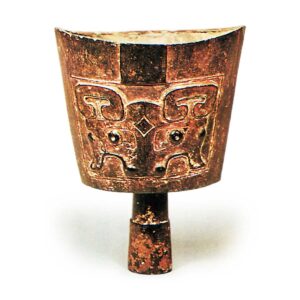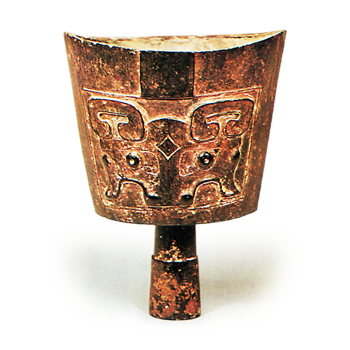
During the firing of earthenware, the inside of the kiln is reduced to a reducing state and then smoked with pine needles or other oily-smoke-producing fuel, causing the carbon to adhere to and be absorbed by the surface of the earthenware. The surface is then polished to a luster. In China, black pottery is a typical type of pottery associated with the Longshan Culture, and has been found in a wide range of locations since it was first discovered at Chengzi Cliff, Longshan Township, Licheng County, Shandong Province. The potter’s wheel was widely used in the molding of black pottery, and some of the potter’s wheels left marks on the bottoms of the vessels. Black pottery is characterized by its richly varied vessel forms and extremely thin wares. Among the shapes of the vessels, some jars, bowls, vessels, and dinghies suggest a relationship with later bronze vessels. The pottery of the Yongsan culture is also very distinctive, but it is not black pottery. The Saige Culture of Gansu Province, discovered by Anderson, is now considered the Gansu Longshan Culture, and the Kujia Yin, Shurengang, and Liangzhu cultures of Jiangnan also have distinctive black ceramics. Speaking of black ceramics, there is another group of black terracotta and black pottery excavated in Hui County before the war. They include dancers, warriors, and horses, as well as mirrors, covered beans, and various other vessels, and are certain to have been Ming vessels used for secondary burials. They are 6-7 cm in diameter, smoked to a jet-black color, polished to a luster, and painted with vermilion on the surface. The design of the vessel indicates that it was made during the Warring States period. The Warring States period tombs in Hui County were investigated after the liberation of China, but nothing exactly like this has been found.
However, there are similarities between the mud sculpture fragment from Ryurikaku and the yong (terracotta) in the Warring States tomb of Shanxi Chouji, which confirms the truth of the Ming ware group in Hui County.



